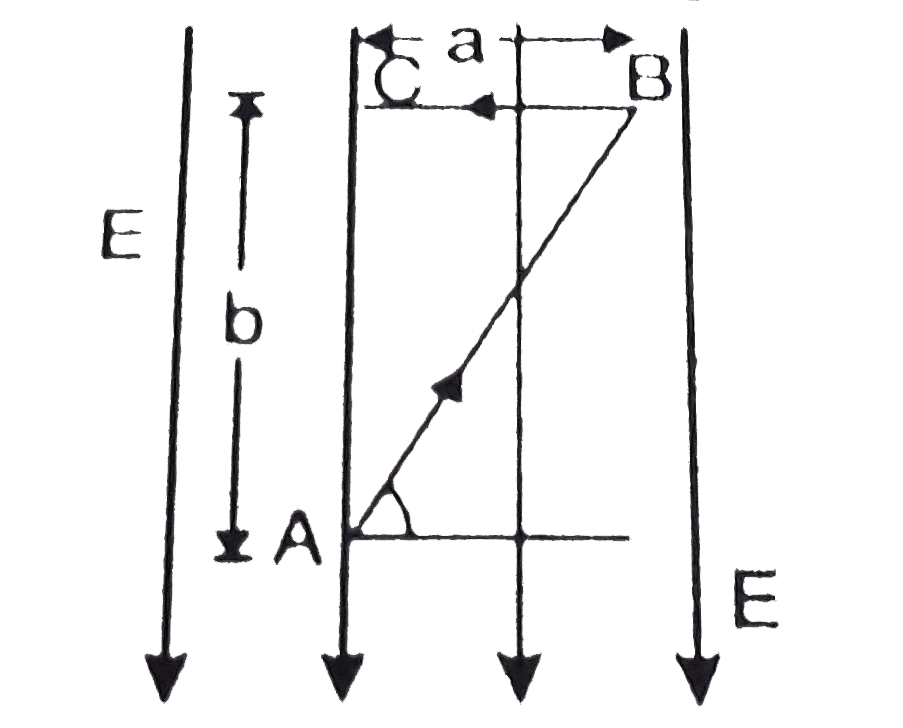Assertion: A small electric dipole is moved translatonally from higher potential to lower potential in uniform electric field. Work done by electric is positive.
Reason: When a positive charge is moved from higher potential to lower potential, work done by electric field positive.
If both Assertion and Reason are true but Reason is the correct explanation of Assertion.
If both Assertion and Reason are true but Reason is not the correct explanation of Assertion.
If Assertion is true, but the Reason is false.
If Assertion is false but the Reason is true.
The correct Answer is:D
To solve the question, we need to analyze both the assertion and the reason provided.
1. Understanding the Assertion: The assertion states that when a small electric dipole is moved from a region of higher electric potential to a region of lower electric potential in a uniform electric field, the work done by the electric field is positive.
- Analysis: An electric dipole consists of two equal and opposite charges separated by a small distance. In a uniform electric field, the net force on the dipole is zero because the forces on the positive and negative charges cancel each other out. Therefore, while the dipole may experience a torque, it does not experience a net translational force that would do work on it.
- Conclusion: The work done by the electric field on the dipole when it is moved from higher potential to lower potential is actually zero, not positive. Hence, the assertion is false.
2. Understanding the Reason: The reason states that when a positive charge is moved from a higher potential to a lower potential, the work done by the electric field is positive.
- Analysis: When a positive charge is moved from a region of higher potential to a region of lower potential, the electric field does positive work on the charge. This is because the electric field is doing work to move the charge in the direction of the field lines, which is from higher to lower potential.
- Conclusion: The reason is true because it accurately describes the behavior of a positive charge in an electric field.
3. Final Conclusion: Since the assertion is false and the reason is true, the correct option is that the assertion is incorrect while the reason is correct.
Final Answer:
- Assertion: False
- Reason: True
- Therefore, the correct option is: D (Assertion is false, Reason is true).
---
- Assertion: False
- Reason: True
- Therefore, the correct option is: D (Assertion is false, Reason is true).
Topper's Solved these Questions
- ELECTROSTATICSBOOK - DC PANDEY ENGLISHCHAPTER - ELECTROSTATICSEXERCISE - Level 1 Objective
82 Videos
- ELECTROSTATICSBOOK - DC PANDEY ENGLISHCHAPTER - ELECTROSTATICSEXERCISE - Level 1 Subjective
15 Videos
- ELECTROSTATICSBOOK - DC PANDEY ENGLISHCHAPTER - ELECTROSTATICSEXERCISE - Exercise 24.7
2 Videos
- ELECTROSTATIC POTENTIAL AND CAPACITORSBOOK - DC PANDEY ENGLISHCHAPTER - ELECTROSTATIC POTENTIAL AND CAPACITORSEXERCISE - (C) Chapter exercises
50 Videos
- GRAVITATIONBOOK - DC PANDEY ENGLISHCHAPTER - GRAVITATIONEXERCISE - All Questions
135 Videos
Similar Questions
Knowledge Check
When a positive q charge is taken from lower potential to a higher potential point, then its potential energy will
Aremin the sameBincreaseCdecreaseDbecome zero
A,B and C are three points in a unifrom electric field. The electric potential is

View SolutionIf a positive charge is shifted from a low - potential region to a high- potential region, the electric potential energy
View SolutionIf a positive charge is shifted from a low - potential region to a high- potential region, the electric potential energy
View SolutionA point charge is taken from a point A to a pint B in an electric field. Does the work done by the electric field depend on the path of the charge ?
View SolutionThe potential difference points a and B in the given uniform electric field is :

View SolutionA positively charged particle is released from rest in a uniform electric field. The electric potential energy of the charge.
View SolutionA positively charged particle is released from rest in a uniform electric field. The electric potential energy of the charge.
View Solution
